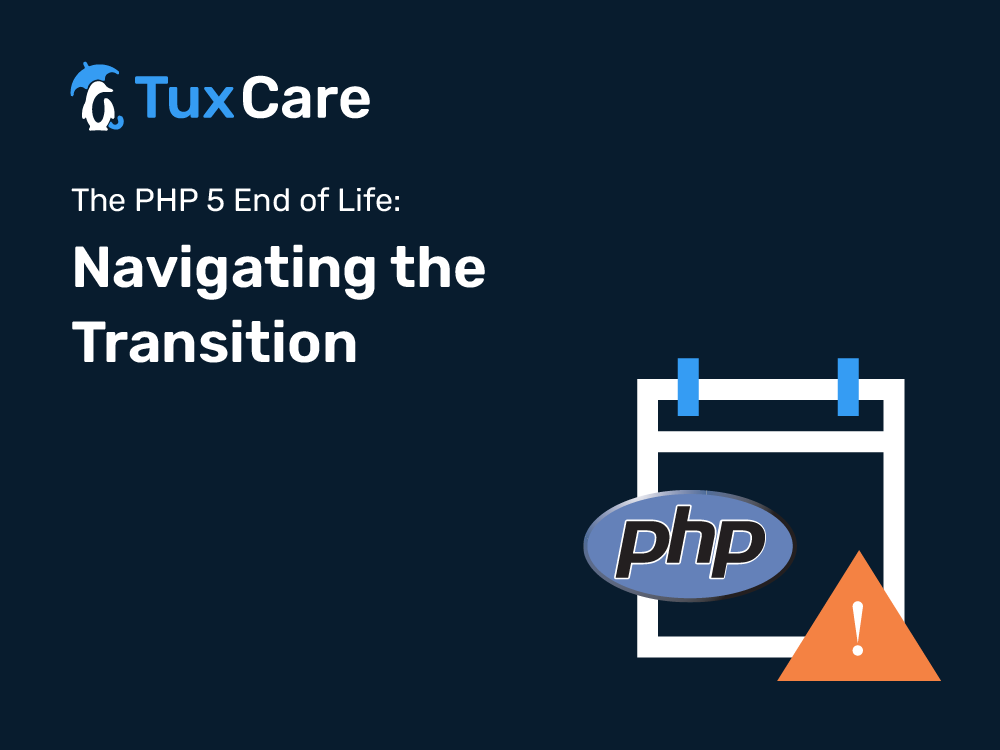PHP 5 End of Life: Navigating the Transition
Especially when it comes to organizations using enterprise software languages that have a tendency to receive updates, staying current with the latest technologies is not just an aspiration — it’s a necessity. This reality was notably underscored with the PHP 5 end-of-life (EOL) announcement some years ago, which was a moment in IT history where change was forced upon PHP developers.
We’ve seen PHP 5 applications become more vulnerable and easier to exploit in the years since this version of PHP reached its end-of-life stage. Just like the evolving infrastructure paradigms, such as Infrastructure as Code, which can be a double-edged sword, migrating from an EOL version brings both opportunities and challenges.
Now let’s take a look back at the PHP 5 EOL transition to extract some lessons that we can carry forward to currently-supported software languages that will soon reach end of life.
PHP 5 EOL: What Did it Mean for Developers?
The term “end of life” might sound terminal, but it essentially means that the software will no longer receive official updates or patches from its creators. In the case of PHP 5, this cessation had several implications:
Security Risks: Without regular updates, PHP 5-based applications became more susceptible to security vulnerabilities.
Compatibility Issues: Newer tools and integrations may not support this older PHP version.
Performance Bottlenecks: PHP 7 and later versions introduced significant performance improvements which PHP 5 users might have missed out on.
As the PHP 5 end of life dawned, businesses and developers needed to make a crucial decision: stay with an outdated, potentially insecure version, or navigate the migration path?
Tools to Aid the Transition
Transitioning from PHP 5 wasn’t as daunting as it might have sounded. By the time PHP 5 went EOL, the developer community and several tech enterprises had rallied to create tools that could smoothen this process, like:
Migration Assistants: Tools like PHP Migration Guide offer detailed documentation on changes between PHP versions, assisting developers in spotting and rectifying deprecated functions.
Compatibility Checkers: PHPCompatibility is a standard for PHP_CodeSniffer that checks for PHP version compatibility. It ensures that your code can run on newer PHP versions without hitches.
Performance Monitors: Tools such as Blackfire.io allow developers to monitor the performance of their PHP applications, identifying bottlenecks that may arise during migration.
It’s also noteworthy to mention TuxCare’s PHP Extended Lifecycle Support, which offers support for PHP versions even after they have reached their EOL stage, ensuring that applications remain secure while migration strategies are being formed.
All of these tools can be used today to prepare for software languages, including currently-supported versions of PHP, that are approaching their EOL date.
Internal Transition Strategies
Migration isn’t just about tools — it’s about strategies. Integrating PHP 87 or later versions into your tech stack requires an understanding of the infrastructure’s nuances.
What does this involve?
Infrastructure Audit: Before migration, use tools like phploc or PHPStan to assess your codebase’s size and quality. This audit provides insights into potential migration challenges.
Staged Deployment: Instead of a complete switch, consider deploying the new PHP version on a staging server. Tools such as Docker can replicate production environments, allowing for comprehensive testing.
Continuous Integration and Deployment: Tools like Jenkins or Travis CI can automate the testing of your codebase in various PHP environments, ensuring a seamless transition.
While these strategies are internal, they often need to interact with external systems, databases, and third-party APIs. This is where your integration tools come into play. Guzzle, for instance, an HTTP client for PHP, has different versions compatible with various PHP versions. Ensuring tools like these are up to date is crucial for maintaining functionality during and after migration.
Embracing the New While Honoring the Old
Even this long after the PHP 5 end of life transition, developers might still feel a pang of nostalgia. After all, PHP 5 brought many innovative features to the web development realm. But, as with all technology, evolution is inevitable. PHP 87 and its successors offer an array of features — improved performance, new functionalities, and better security mechanisms.
By acknowledging the challenges and embracing the tools and strategies available, developers were able to navigate this transition smoothly. Migration, in this sense, became not just about updating a software version but optimizing for a better, more efficient, and secure web development future.
Final Thoughts
The PHP 5 end of life shift signified a significant transition phase for the developer community. But, as with every challenge, it was also an opportunity — to adopt better practices, integrate more advanced tools, and deliver superior web experiences. As you navigate a journey of migrating away from an EOL software language, just like PHP 5 users did, remember that tools, strategies, and community support, such as the PHP Extended Lifecycle Support from TuxCare, are at your disposal – and can ensure that your transition is not just successful but also seamless.



 Documentation
Documentation Login
Login




